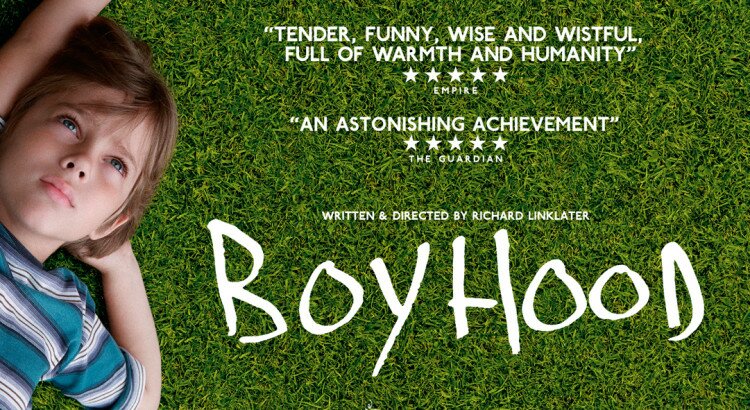Do we need a new blog on culture? Well, did we need a new pope? I think both questions answer themselves.
Webster’s defines “smash cut” as… well, Webster’s doesn’t have “smash cut” in it. The first suggestion it lists in lieu of “smash cut” is “Siamese cat,” but that’s just silly.
Naturally, Google has a definition: “A smash cut is a technique in film and other moving visual media where one scene abruptly cuts to another without transition, usually meant to startle the audience.”
Which isn’t so silly. Because Hollywood is going through an abrupt change that, rather than startling the audience, seems to be scaring the bejebus out of the movie studios and TV networks.
This probably isn’t news to you, but digital technology, which now runs the gamut from production to distribution, has revolutionized the film and TV industry (just as it upended the music business earlier).
Used to be that you needed a battery of refrigerator-sized movie cameras, miles of celluloid film, hanger-sized sound stages, and battalions of crew members to shoot a movie, along with editing suites with bulky equipment that would literally cut and splice together reels of film.
And then, you needed to make thousands of physical copies of these big reels of film and ship them all over the country simultaneously for opening weekend. And you had to spend tens of millions in TV advertising to get the word out and butts in the seats.
Now? You can shoot an entire movie with a handheld HD videocamera and a few hard drives that could all fit inside one suitcase. You can edit the whole thing with nothing but a laptop. You can distribute your finished product to hundreds of millions of potential customers with literally the touch of a trackpad button and a WiFi connection. And you can market the whole thing for free with a Twitter account and Facebook page.
Of course, there’s no guarantee you will have the same level of viewership or gross income that the studio movie will garner. But the playing field is more level than it has ever been before.
Of all of these changes — the lowering of barriers on production, post-production, marketing, and distribution — the most radical is distribution. The studios were the ultimate gatekeepers on what movies were shown in theaters and sold in video-stores (remember those?), what songs played on the radio, what shows got on TV. But while they continued to zealously patrol those gates, the walls around those gates have been crumbling.
was right, in a way — the (digital) revolution will not be televised. Rather, it will be blogged, podcasted, YouTubed, Tweeted, Vimeo’ed, Pandora’ed, Amazon Primed, and Netflix streamed. Studios can only stand by (like record-company executives before them) as their business models go the way of the dinosaur.
While the studio system certainly had its advantages and its triumphs, both artistic and financial, it was often hostile to those who didn’t share their paternalistic, coastal-elite point of view. Having connections –familial, political, or school ties — were crucial to breaking in. This fostered a group-think mentality, while those with other perspectives were largely locked out.
As Hollywood’s monopoly on the means of distribution fades, other points of view will break through as people outside the system begin to create.
Smash Cut is a group blog that seeks to liberate our culture from Hollywood’s stale, hidebound world view, encouraging more diverse voices and views.
But likely more often than not, we will simply write silly posts and capsule movie reviews, pointing you to the things we like (or warning you off things that we don’t like). We want to hear from you, so we welcome comments.
We want this to be a conversation. We will often disagree with each other — which is good, because as I said, we want to see/hear a diversity of ideas and views. You will not find a lot of groupthink here. In fact, we are all in firm agreement to avoid groupthink.
Like a Paranormal Activity movie, change is scary but simultaneously thrilling. The changes underway in the Hollywood system provide tremendous opportunity to those who felt cut out of the old-boys-network because they weren’t willing to surrender their independence of thought.
Fresh new voices are emerging, and there’s no rule that says they must parrot the same tired Hollywood point of view. We for one can’t wait to hear what they have to say. And this blog gives us a chance to throw in our own two bitcoins from time to time.
 After all the accolades it’s been receiving and the good word-of-mouth from family and friends, my wife and I were pretty hopeful about a great night-in watching the multi-Oscar nominated film Boyhood streaming for rent on our Roku. Aside from the fact that the editing of footage shot over a 12 year year period was extraordinarily seamless, I was utterly disappointed in the outcome of this kid’s story. Make no mistake, the film is well crafted, the acting engrosses you and the movie moves pretty well for 2 hours and 45 minutes. That said, it’s unclear to me if director Richard Linklater intended all along to present a purely fictional story about a broken family who struggles to keep it together with little to no help from asking extended family, friends or a power greater than themselves or if it just evolved that way over the course of its 12 year production because it mirrored a life close to him. Because if the 18 year old man we windup being left with at the end of this film is any indication of what our society is inheriting now, than we are truly screwed. With this film, Linklater may have just wound up delivering the penultimate anecdote of what is to be the story of the downfall of American civilization.
After all the accolades it’s been receiving and the good word-of-mouth from family and friends, my wife and I were pretty hopeful about a great night-in watching the multi-Oscar nominated film Boyhood streaming for rent on our Roku. Aside from the fact that the editing of footage shot over a 12 year year period was extraordinarily seamless, I was utterly disappointed in the outcome of this kid’s story. Make no mistake, the film is well crafted, the acting engrosses you and the movie moves pretty well for 2 hours and 45 minutes. That said, it’s unclear to me if director Richard Linklater intended all along to present a purely fictional story about a broken family who struggles to keep it together with little to no help from asking extended family, friends or a power greater than themselves or if it just evolved that way over the course of its 12 year production because it mirrored a life close to him. Because if the 18 year old man we windup being left with at the end of this film is any indication of what our society is inheriting now, than we are truly screwed. With this film, Linklater may have just wound up delivering the penultimate anecdote of what is to be the story of the downfall of American civilization.

